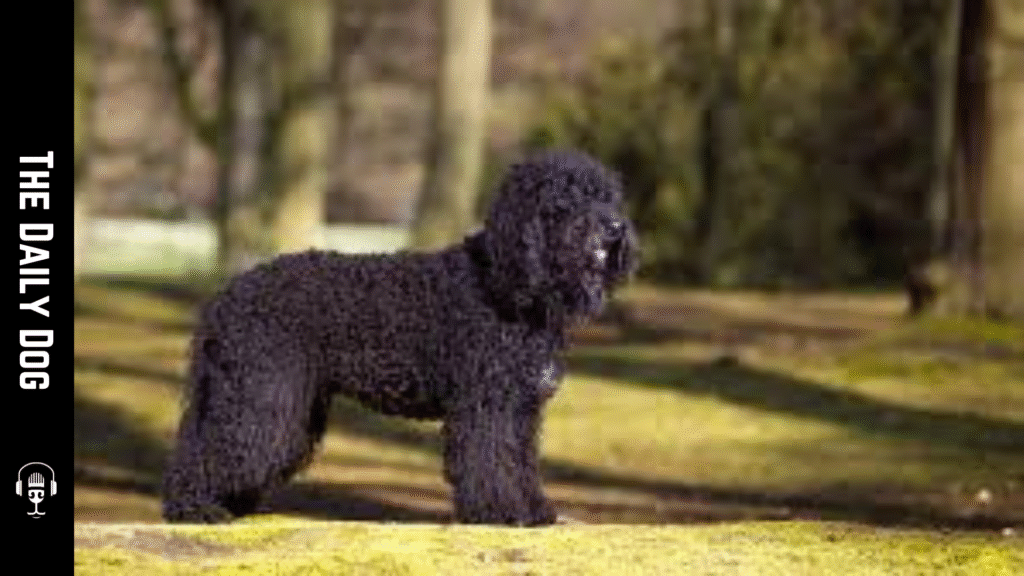The Barbet is an ancient and engaging French water dog whose presence alone signals a thoughtful blend of intelligence, devotion, and athleticism. Known for its curly, waterproof coat, affectionate nature, and versatile skill set, the Barbet has earned a growing following among families, active outdoors enthusiasts, and seasoned dog owners who value a calm demeanor paired with real-world utility. This post explores the Barbet’s origins, temperament, care requirements, exercise needs, and training considerations, offering practical insights for prospective owners and seasoned enthusiasts alike.
Origins and breed characteristics
The Barbet’s history traces back centuries in France, where it developed as a multi-purpose hunting companion and water retriever. Distinguished by a distinctive curly or wavy coat that provides protection in wet conditions, Barbets are medium-sized dogs with a sturdy, balanced frame. They typically feature a broad skull, kind eyes, and a slightly arched neck that transitions smoothly into a compact body. Coat color tends to vary but often includes shades of black, gray, or fawn, with the defining feature being the tight, dense curls that resist matting when properly groomed. This combination of rugged functionality and affectionate expression makes the Barbet an appealing option for families and active individuals who want a loyal, trainable partner.
Temperament and suitability
Barbets are renowned for their even-tempered, people-centric nature. They form strong bonds with their families, demonstrating a patient and forgiving disposition that adapts well to households with children or other pets when properly socialized. Their intelligence is notable, translating into an eagerness to learn and an ability to pick up new tasks with consistent, positive training methods. While they are calm indoors and enjoy family time, Barbets also possess an athletic instinct that rewards structured physical activity. This balance makes them suitable for a range of lifestyles—from urban dwellers who can provide daily mental stimulation to rural households with ample space for outdoor adventures.
Care, grooming, and health considerations
Grooming is a defining responsibility when owning a Barbet. The breed’s curly coat requires regular brushing to prevent mats and tangles, particularly around areas prone to moisture and debris. Professional grooming every couple of months can help maintain coat health and minimize shedding, though daily or every-other-day brushing is often necessary between grooming sessions. Bathing should be done as needed, using a dog-formulated shampoo to protect natural oils. Owners should also monitor ear health, dental hygiene, and nail trims as part of a routine care schedule.
Health-wise, Barbets are generally robust, yet like all breeds, they are predisposed to certain conditions. Prospective owners should be aware of potential hip dysplasia, progressive retinal atrophy, and ear infections due to their floppy ears and aura of moisture-prone environments. Regular veterinary check-ups, a balanced diet, and appropriate exercise can help mitigate some risks. Reputable breeders who perform health testing on parent dogs can increase the likelihood of a healthy offspring and reduce inherited issues.
Exercise, training, and mental stimulation
Active engagement is essential for a Barbet’s well-being. They thrive when given daily opportunities for physical exercise, intellectual challenge, and social interaction. A typical routine includes brisk daily walks, swimming in safe environments, and structured play that encourages problem-solving. Because Barbets are highly trainable, incorporating obedience work, scent games, and agility or retrieval tasks can keep them mentally satisfied and less prone to boredom-induced behaviors.
From a training perspective, consistent, reward-based methods yield the best results. Positive reinforcement, including praise, treats, and play, encourages a cooperative attitude and quicker learning. Early socialization—exposing the Barbet to various people, animals, and environments—helps prevent shyness or over-stimulation in new situations. Because Barbets are intelligent and sometimes analytical, clear communication and short, frequent training sessions can prevent fatigue while maintaining engagement. With patience and persistence, owners can teach Barbet-specific skills such as water recall, scent detection, and scent-based search tasks that utilize their natural drive and problem-solving abilities.
Living arrangements and family dynamics
Barbets adapt well to many living situations, provided their needs for exercise and mental activity are met. They tend to do best in homes where they have access to a secure yard or nearby parks for play and exploration. Given their people-oriented nature, they generally prefer households where someone is present for a significant portion of the day or where a family routine accommodates regular training sessions and activities.Chronically, potential owners should plan for ongoing grooming care and the time required to maintain social and physical routines. With consistent structure and affection, the Barbet can be a steady, loyal companion that enhances family dynamics rather than one that simply shares the living space.
Grooming essentials and practical tips
- Brushing: Aim for several times per week, with extra attention during shedding seasons or when the coat is growing in.
- Bathing: Occasional baths as needed; use a gentle, dog-safe shampoo.
- Grooming maintenance: Regular trimming around the ears, paws, and face; professional trims every 6–8 weeks can help preserve coat health and prevent matting.
- Ear care: Check ears weekly for redness, wax buildup, or odor, and clean with a veterinarian-approved solution if necessary.
- Dental care: Brush teeth regularly and provide dental chews to support oral health.
- Nail care: Trim nails every few weeks to prevent overgrowth and discomfort.
Choosing the right Barbet: breeder considerations and responsible ownership
When selecting a Barbet, prospective owners should emphasize health testing, reputable breeding practices, and lineage transparency. Reputable breeders will typically provide health clearances for parent dogs, including hip evaluations and eye examinations, and will welcome questions about temperament and socialization. Visiting the breeder’s facilities to observe how puppies are raised, socialized, and handled can offer valuable insights into future temperament and behavior. Adopting from rescue or breed-specific groups is another option; these avenues, while sometimes requiring extra patience, can yield deeply rewarding companionship with dogs that have already demonstrated resilience and adaptability.
Barbet as a service and working dog
Beyond family companionship, the Barbet’s versatility makes it suitable for various working-dog roles. Historically celebrated as a water retriever for hunters, the breed’s adaptability lends itself to activities such as obedience trials, rally, and canine sports. For active owners who appreciate a dog with problem-solving prowess and a love of water, the Barbet can be a dedicated partner in training programs and community activities. The breed’s calm demeanor and eagerness to please often translate into a positive experience in learning environments, whether for sport, service, or therapy contexts.
Travel, safety, and lifestyle integration
For families who travel or engage in outdoor adventures, the Barbet’s durable coat and water-friendly constitution can be advantageous. They can accompany owners on hikes, lake trips, or beach outings, provided safety and supervision are maintained. Training should incorporate recall reliability, safe water entry and exit, and appropriate behavior in unfamiliar settings. As with any dog, socialization and consistent routines help ensure the Barbet remains well-behaved in diverse situations, from bustling urban environments to quiet rural trails.
Careful considerations: licensing, insurance, and ongoing education
Owners should stay informed about local licensing requirements and breed-specific resources in their area. Pet insurance can be a prudent consideration for families seeking financial protection against potential health issues over a Barbet’s lifespan. Ongoing education through training classes, workshops, or dog sports clubs can enhance the bond between owner and Barbet while expanding the dog’s skill set and confidence.
The Barbet is a breed that harmonizes affectionate companionship with multi-faceted ability. Its gentle temperament, love of water, and trainable nature make it a standout choice for families and active individuals who seek a loyal partner capable of learning and thriving in varied environments. By prioritizing consistent grooming, structured exercise, and positive reinforcement training, Barbet owners can cultivate a harmonious relationship that stands the test of time.
Call to action
If you’re looking to deepen your dog-training knowledge and hear practical tips from expert trainers who have worked with thousands of clients, listen to Dog Works Radio. Training tips and tricks from top trainers are available at https://dogworksradio.com.
We offer a FREE Strategy Call.
Click on the graphic to learn more
Read More


Dog Training: The Pros and Cons of Doing It Yourself vs. Hiring a Professional








